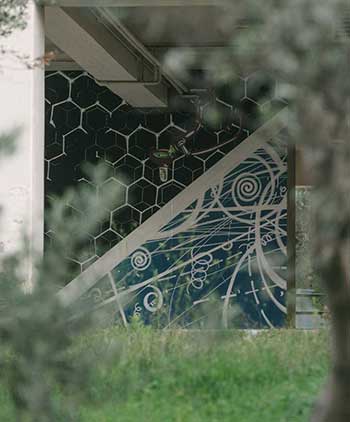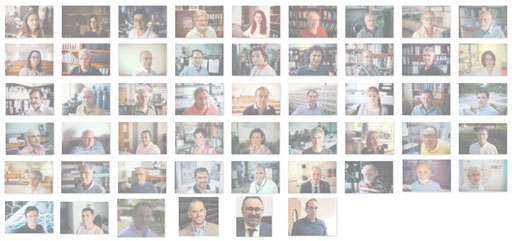- Τμήμα
Διοίκηση

- Προσωπικό
- Σπουδές
Σπουδές στο ΤΧΜ
Προπτυχιακά
Διπλωματικές Εργασίες
Μεταπτυχιακά
Διδακτορικό Δίπλωμα (PhD)
- Γενικές Πληροφορίες
- Νέες Αιτήσεις
- Κανονισμός
- Μαθήματα
- Προφορική Παρουσίαση
- Έρευνα
- Υποστήριξη Διατριβής
- Προηγούμενες Διατριβές
- Πρόγραμμα Εξετάσεων
Μεταπτυχιακό Πρόγραμμα (MSc)
Διατμηματικό ΠΜΣ (MSc)
- Φοιτητές
- Απόφοιτοι
- Έρευνα

Ερευνητική Δραστηριότητα στο ΤΧΜ
- Νέα & Εκδηλώσεις

Ανακοινώσεις
PhD Thesis Defence Presentations - Leila Abbaszadeh

Τίτλος Παρουσίασης (Presentation Title): Study of biological nitrification kinetics under harsh environmental conditions
Presentation Type (Τύπος Παρουσίασης): Υποστήριξη Διδακτορικής Διατριβής
Ονοματεπώνυμο Ομιλητή (Speakers Full Name): Leila Abbaszadeh
Προέλευση Ομιλητή (Speakers Affiliation): University of Patras, Department of Chemical Engineering
Seminar Room (Αίθουσα): Βιβλιοθήκη "Αλκιβιάδης Χ. Παγιατάκης"
Ημερομηνία: Τετ, 20 Δεκ 2023,
Ώρα:
04:00 - 07:00
Διεύθυνση Διαδικτυακής Μετάδοσης: https://upatras-gr.zoom.us/j/91035002180?pwd=VjNmUmhuVUJaN2dTbGk3aGpsKzArdz09
Περίληψη (Abstract)
In every human community there is a production of liquid and solid waste as a result of its activity. Nitrogen contained in wastewater is a pervasive and serious aquatic problem, known as eutrophication that causes excessive growth of algae and cyanobacteria. Leachate is one of the riskiest types of wastewaters in terms of composition and nitrogen concentration.
Leachate is an aqueous liquid produced during the decomposition of waste disposed of in municipal landfills, which is enriched with various chemical compounds and elements. Its formation involves both chemical and biochemical processes, including the dissolution of soluble salts and the breakdown of organic material. Organic nitrogen from food residues is a significant source of nitrogenous compounds in leachate. The production and chemical composition of leachate are influenced by factors like waste composition, size, and density, soil moisture interaction, hydrology, climate, microbial processes, landfill design, and operational parameters. The chemical composition of leachate can vary widely, but the high concentration of nitrogen is a characteristic of all leachates.
Biological approaches take advantage of specific groups of microorganisms involved in nitrogen cycling to remove reactive nitrogen from reactor systems by converting ammonia to nitrogen gas. Nitrification is a two-steps biological oxidation process performed by two different groups of aerobic autotrophic bacteria. The first step of nitrification is the oxidation of ammonium (NH4+) to nitrite (NO2-) carried out by the ammonia-oxidizing bacteria (AOB), while the second step is the oxidation of nitrite (NO2-) to nitrate (NO3-) carried out by the nitrite-oxidizing bacteria (NOB). On the other hand, denitrification is the reduction of nitrate to nitrite followed by its further reduction to form nitrogen gas carried out by a group of anoxic heterotrophic bacteria. There is no doubt that nitrogen has become an important key parameter in the evaluation of the effluent of the WWTPs.
Batch experiments were conducted focusing on the study of the biological nitrification behavior of microorganisms in different concentrations of leachate obtained from a sanitary waste landfill in the municipality of Patras. Findings revealed that the presence of leachate hinders the biological nitrification process. Initially, leachate at low concentrations posed no issue for nitrogen removal. However, as leachate concentration increased, due to the high COD and ammonium content of the leachate which provides ideal conditions for the growth of heterotrophs, the organic load in the waste favored the growth of competitive heterotrophic bacteria, eventually replacing and deactivating the nitrifying cultures. As heterotrophic biomass density increased, substrate diffusion for nitrifying microorganisms became more challenging and limited the growth of existing nitrifying biomass, due to increased resistance to mass transfer inside the biomass aggregates. Additionally, attempts have been made to calculate the kinetic constants of nitrification using computational methods and the Aquasim platform, which confirms the significant increase of heterotrophic biomass compared to nitrifiers.
Since the ammonium oxidizers are the main key to nitrification, it was necessary to investigate the effect of starvation on nitrification under conditions of nitrogen limitation and subsequent recovery, shedding light on the impacts of stress duration, substrate concentration, and pH on an enriched culture of ammonia-oxidizing microorganisms.
Interestingly, contrary to the typical behavior of AOB, nitrogen starvation led to rapid accumulation of ammonium/ammonia inside the cells, while the production of nitrate was delayed, resulting in slower recovery and lower nitrification rates compared to non-starved cells. These findings suggest that exposing nitrifiers (AOB) to nitrogen starvation conditions may have detrimental implications for the overall nitrogen removal efficiency in wastewater treatment plants (WWTPs).
Also, the study revealed that the maximum accumulation capacity remained constant at external (bulk) ammonium concentrations ranging from 250 to 750 mg N L−1 (p-value = 0.889). However, the accumulation of nitrogen by starved AOB exhibited significant variations depending on the pH values (p-value = 0). Based on these observations, the prompt uptake of nitrogen by starved nitrifiers in the presence of available ammonium could serve as a survival strategy, enabling AOB to restore their activity and enhance their metabolic processes following a period of nitrogen limitation. Consequently, the accumulation of ammonia could provide a competitive advantage in substrate utilization among similar bacterial groups and could be leveraged as an effective strategy for nitrogen removal and the simultaneous generation of nitrogen-rich biomass, which holds potential value and could be further utilized.
Since nitrification is a two-step process, to expand the insight, in the next step, experimental tests and modelling were conducted into Nitrite-Oxidizing Bacteria growth and ammonia starvation effect. A comprehensive mathematical model was developed to describe the nitrification process in mixed cultures involving isolated NOB and starved AOB. The growth equation for NOB was divided into anabolism and catabolism, elucidating the key substrates driving their metabolic activities. Considering the ammonia starvation effect, a single cell-based model was developed to capture the mass transfer phenomena across the AOB cell membrane. This addition allowed for a more accurate representation of the biological dynamics during starvation conditions. The model’s accuracy was tested using experimental data that was not used in the model calibration step. The prediction’s coefficient of determination (R2) was estimated at 0.9. By providing insights into the intricate mechanisms underlying nitrification, this model contributes to the advancement of sustainable wastewater treatment practices.
Σύντομο Βιογραφικό Ομιλητή (Speakers Short CV)
Education
2015-present: PhD Candidate, Department of Chemical Engineering, University of Patras
Title of doctoral thesis: Study of biological nitrification kinetics under harsh environmental conditions
Responsible professor: Michael Kornaros, Professor in the Department of Chemical Engineering, University of Patras
2012-2014: Postgraduate Diploma in Applied Chemistry, Islamic Azad University of Ardebil, IRAN (Evaluated by Doatap (ΔΟΑΤΑΠ)).
Master thesis title: "A study on Chemical and Economical Analysis of Biogas Production from Municipal Waste by Landfill Method (Ardebil province) "
Responsible professor: Ali Shamel, Professor in the Department of Chemistry, Islamic Azad University of Ardebil
2007-2011: Diploma in Applied Chemistry, Islamic Azad University of Ardebil, IRAN
Evaluated by Doatap (ΔΟΑΤΑΠ)
Foreign Languages
English (B2)
Greek (A1)
Teaching experience
Co-supervision of diploma theses.
Publications in peer-reviewed international journals
- L. Abbaszadeh, E. Koutra, K. Tsigkou, M. Gaspari, P. G. Kougias, and M. Kornaros, “Nitrification upon Nitrogen Starvation and Recovery: Effect of Stress Period, Substrate Concentration and pH on Ammonia Oxidizers’ Performance,” Fermentation, vol. 8, no. 8, 2022, doi: 10.3390/fermentation8080387.
- G. Manthos, L. Abbaszadeh, D. Zagklis, and M. Kornaros, “Mathematical Modeling of Nitrification in Mixed Cultures: Insights into Nitrite-Oxidizing Bacteria Growth and Ammonia Starvation Effect,” Fermentation, vol. 9, no. 7, 2023, doi: 10.3390/fermentation9070681.



